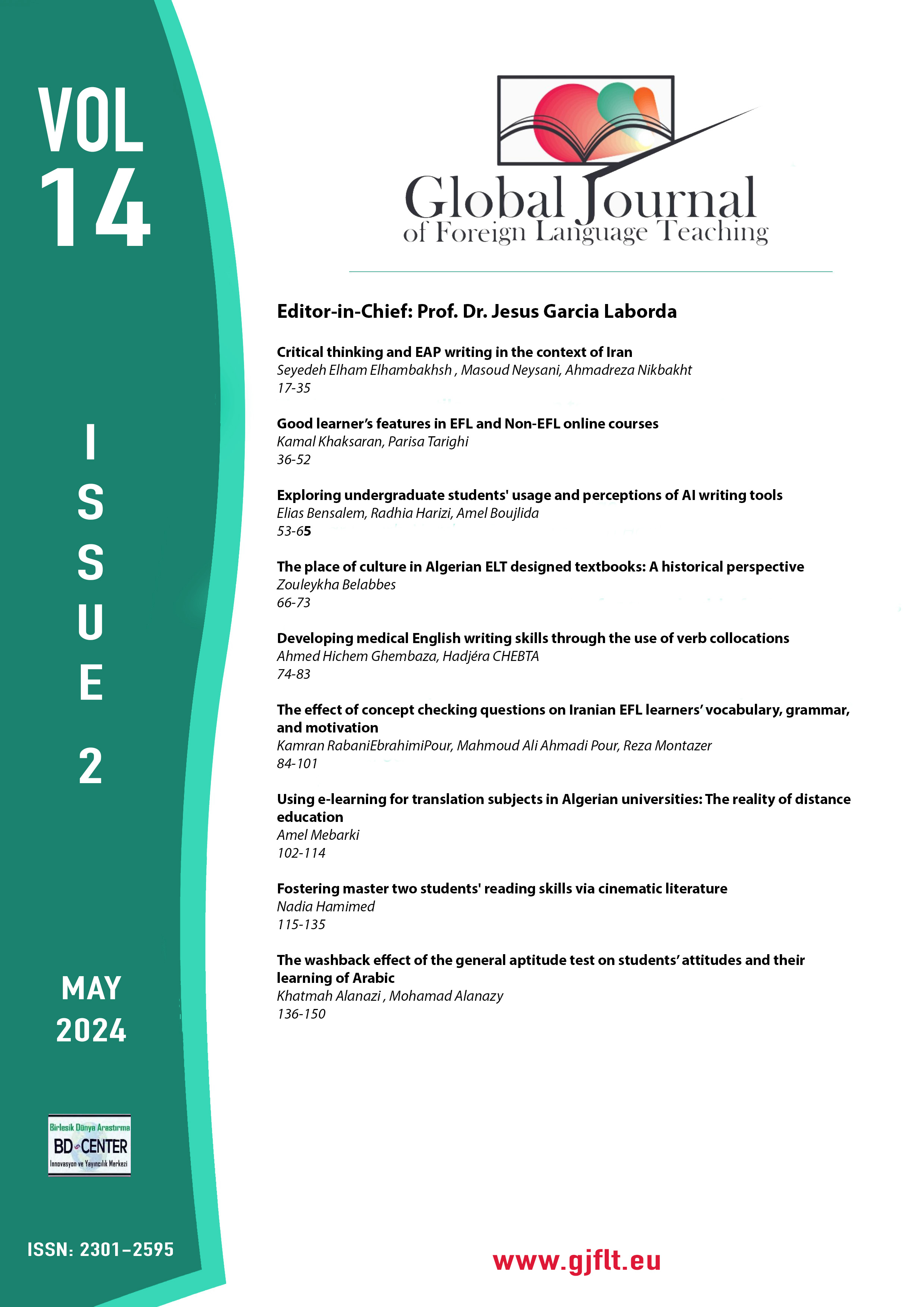The place of culture in Algerian ELT designed textbooks: A historical perspective
Main Article Content
Abstract
The present study examines how and which culture is designed in Algerian ELT textbooks, through a literature review. More specifically, this research is an outline of cultural components used in the ELT textbooks before and after the recent Algerian Educational Reforms. The current study further scrutinizes how the contact of cultures (source and target), which was previously considered a negative aspect in ELT settings since it could lead to cultural hostility, is heavily introduced in the current textbooks as a way to build up the learners' cross-cultural awareness. Throughout this review, it has been revealed that within the recently conducted educational reforms, the representations of the Self (learners’ local culture) and the Other (Foreign language culture) are carefully selected and introduced in the EFL textbooks to develop learners’ intercultural competence.
Keywords: Education; ELT textbooks; intercultural competence; source culture; target culture.
Downloads
Article Details

This work is licensed under a Creative Commons Attribution-NonCommercial-NoDerivatives 4.0 International License.
Authors who publish with this journal agree to the following terms:- Authors retain copyright and grant the journal right of first publication with the work simultaneously licensed under a Creative Commons Attribution License that allows others to share the work with an acknowledgement of the work's authorship and initial publication in this journal.
- Authors are able to enter into separate, additional contractual arrangements for the non-exclusive distribution of the journal's published version of the work (e.g., post it to an institutional repository or publish it in a book), with an acknowledgement of its initial publication in this journal.
- Authors are permitted and encouraged to post their work online (e.g., in institutional repositories or on their website) prior to and during the submission process, as it can lead to productive exchanges, as well as earlier and greater citation of published work (SeeThe Effect of Open Access).
